djacobox mentioned a 300mm Ai-S Nikkor lens that is really small...if it's an ED-glass and internal focus model, he probably means the 300mm f/4.5 ED~IF. It has a very slender barrel, with a light-touch Internal Focus system ring that has amazing feel and functionality when the lens is in good repair, and the focusing ring is not bound up with 30 years' worth of abuse or neglect. The focusing system moves small, internal lens elements, so the action is LIGHT, and smooth...this is not like older 300mm helicoid-focusing lenses...the 300 f/4.5 ED~IF CAN BE successfully used for action photography. The focusing ring has marked distances of Infinity, 100ft/30 meters; 50 ft 15 meters;10 meters; 30 feet; 7 meters; 20 feet; 5 meters; 15 feet;4 meters; 12 feet; 10 feet; 3 meters; 2.5 meters Minimum Focus Distance. When these were new, in the mid-1980's I used to use the one my college newspapepr had in the pool, and it has FEATHER-touch focusing movement...as in one finger, rolling ability...racing to and fro....my current lens has a much more dampened, yet silky-smooth focus throw; I have encountered a few "beater grade" models that had very,very stiff focus throw.
The thing is, the focus throw from 100 feet to 50 feet is about a 3/8 inch turn, or maybe 15 degrees; from 50 to 30 feet is a bit more throw, so it's fairly easy to be both accurate, and precise. The focus throw from 30 to 15 feet is roughly 50 degrees in angle, and about 1.25 inches along the barrel, so the focus "slows down" and also becomes
more precise, which helps the human hand,eye,and brain to focus a 300mm lens as well as it NEEDS to be. The 400mm f/3.5 ED~IF works similarly, but has even more marked distances, and is even easier to focus on moving subjects! These lenses were designed to be state-of-the-art "action" lenses in their day, and were groundbreaking when they appeared. I have used the 400/3.5 for track and field, baseball, and some football...the 400/3.5 is one of the absolute easiest-to-handle big lenses ever made. Skinny barrel, big front element group,pre-set distance "Stop" which can be overrun if desired, and two-stage focus tensioning system for either super-light touch, OR firmer, stiffer focusing action if desired. The 400/3.5 balances almost perfectly with a 1-digit Nikon body for ballast, with the lens supported on a monopod.
I just took these puppies out and snapped a few quick shots with a single light. Bang, bang, bang!
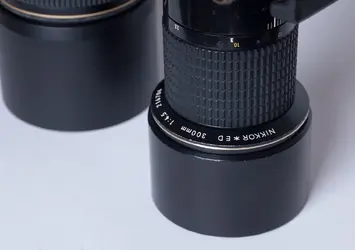
Photo 1) The 300 f/4.5 ED's nameplate and signature "gold ring", indicating
Extra-low
Dispersion glass, an optical advancement Nikon invented and named "
ED Glass". Other companies later copied Nikon's lead, and named their own high-performance glass melts with their own proprietary letter code systems.
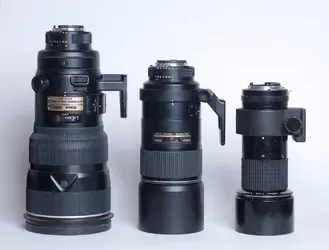
Photo 2) The 300 f/2.8 AF-S II (magnesium barreled model), 300mm f/4 AF-S still current; 300mm f/4.5 ED~IF.
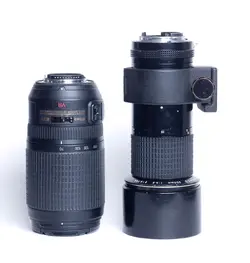

Photos 3 and 4:The 70-300mm f/4.5~5.6 AF-S G zoom is shown in Photo 4 set to 70mm, and extended to 300mm in Photo 4, seen against the 300mm f/4.5 ED~IF. THis is a size comparison most people can relate to, since the 70-300 AF-S G is in pretty common circulation these days.
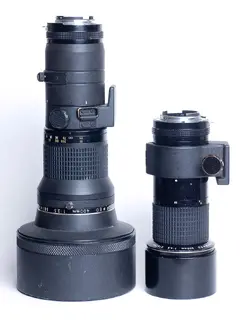
Photo 5: The 400mm f/3.5 ED~IF and its littler brother, the 300mm f/4.5 ED~IF. When it was announced in 1976, the 400/3.5 was the world's FASTEST super-telephoto lens. This is a 1982, native Ai-S version, the 181st sample made if my figures are correct. This 400mm lens has been retrofitted with a CPU and contacts, so it automatically reports to any Nikon AF SLR or D-SLR, with no need to manually enter EXIF info into the camera's memory.




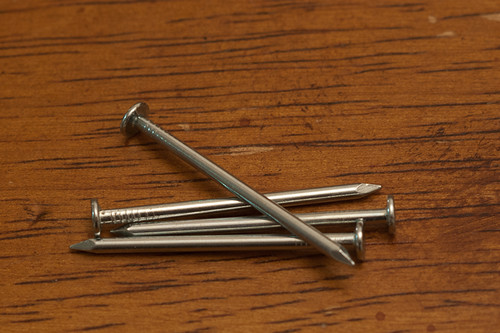







![[No title]](/data/xfmg/thumbnail/32/32632-476f3d925401f13cffe1cc2b41945614.jpg?1734162117)






